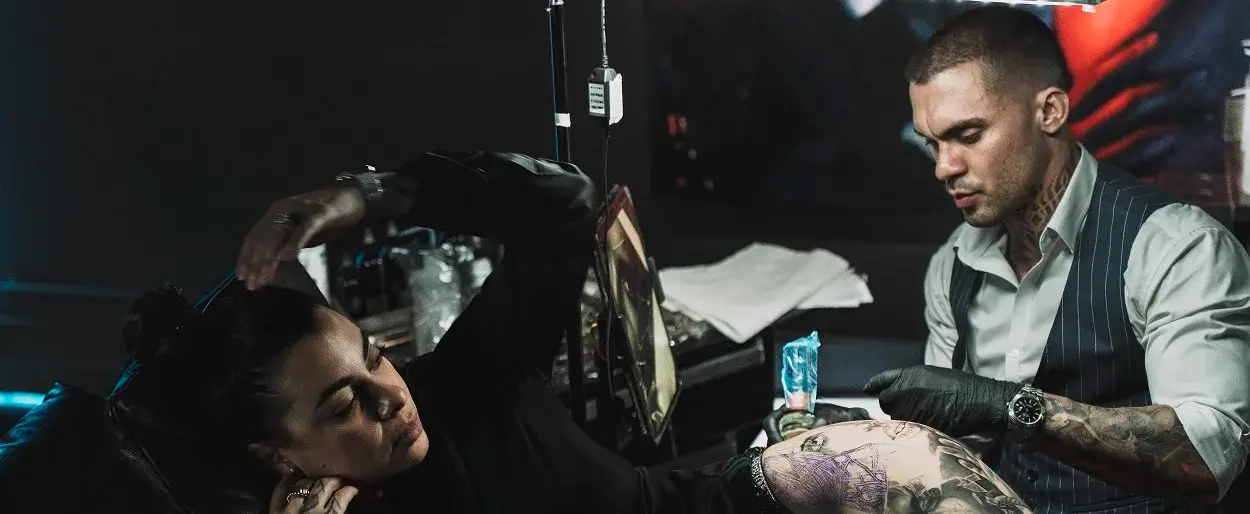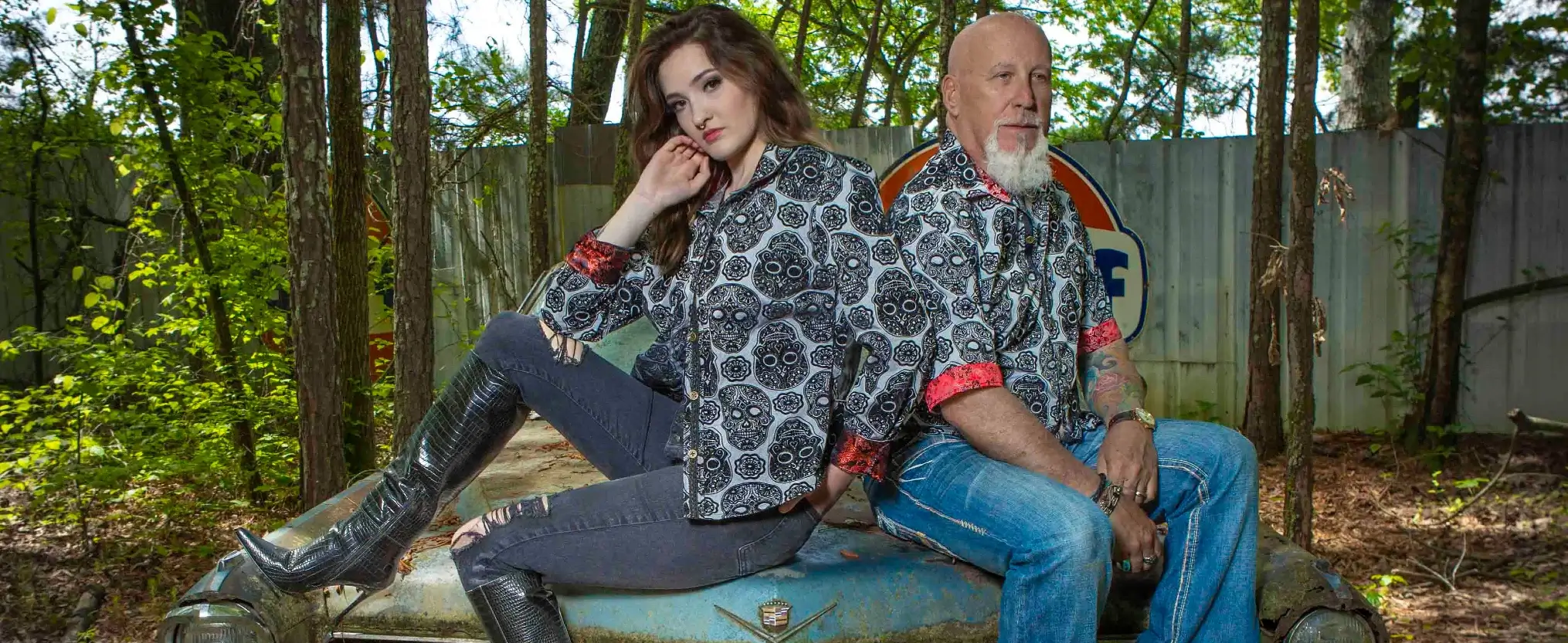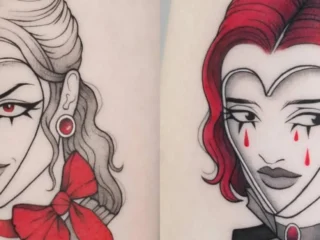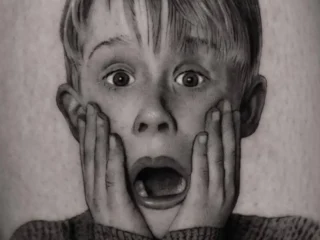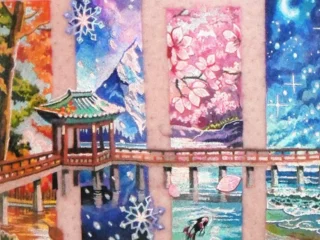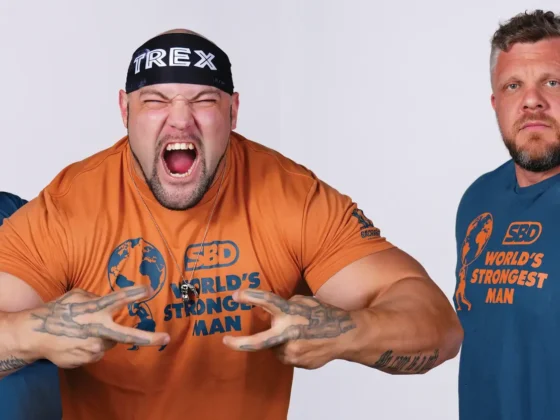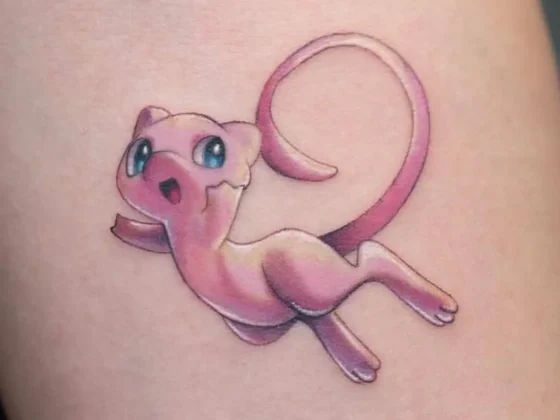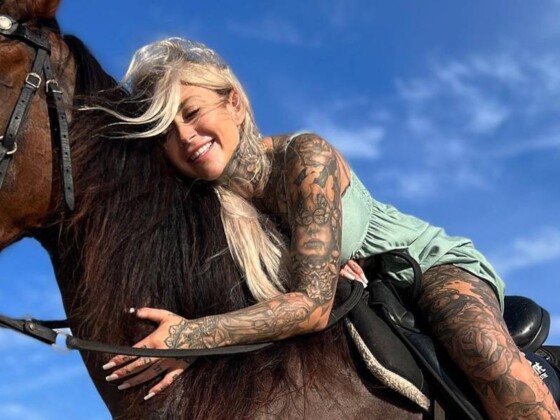Inked Mag Staff
July 24th, 2018
Tattoo Pain. Why Do Tattoos Hurt So Much? Science has the answer.
How much did that hurt? Did that hurt? Anyone who has tattoos has been posed this question countless times. And ninety-nine times out of a hundred if the person is…
How much did that hurt?
Did that hurt? Anyone who has tattoos has been posed this question countless times. And ninety-nine times out of a hundred if the person is honest will answer something like, “Hell yeah!” And even though it is pretty much unanimous that every tattoo collector will agree that the process of getting tattooed hurts, they are not really sure why…other than it involves needles. The other question regarding pain and tattoos is more of a “in house joke” among tattoo collectors and that is “What part of the body hurts most to get tattooed.” That’s when the “war stories” begin to fly out and the shirts go flying off to reveal tattoos on various body parts, usually with commentary that involves phrases like, “hurt like a bastard”, “this was the worst” and “I almost bailed midway”. Again, despite the overwhelming agreement that getting tattooed on certain body parts “hurts like a bastard” the reasons why are not that clear. So, let’s see if we can have history and science enlighten us.
First a little interesting history on the art of primal marking.

The accepted but still debated origin of the word tattoo is believed to be derived from the Polynesian word “tatau” which means “to mark”. Sounds logical, but no one is really sure and since tattooing has been around long before the Polynesian culture, many believe its etymology stems much further back. For instance, Otzi (the ice man) who was found in the Swiss Alps in 1991, and lived between 3400BC and 3100BC had tattoos. His 61 markings although just dots were ink tattoos and believed to have had some medicinal significance, since 85% of them line up with known acupuncture points and Otzi’s bones due reveal he had arthritis. According to Dr. Lars Kurtak, a world-renowned tattoo expert and anthropologist with the Repatriation Office of the National Museum of Natural History, “He appeared to have terrible arthritis. [The tattoos were] so dark, they seemed to be repeated applications and some of them he could not reach on his own,” he notes.
For some past and present cultures, the ability to successfully endure extreme amounts of pain is a rite of passage from childhood to adulthood or as a way to show a commitment to a society or gang. In primitive cultures, it is not only the ability to endure excruciating pain at the hands of the tattoo tools, but also survive the blood loss from these unsophisticated methods of getting inked.

Early tattooing was done by cutting the skin and actually rubbing the ink into the open wound or using hand fashioned needles made of bone, wood or metal (usually rusty) to push ink into the skin. The first recorded encounter of a Westerner witnessing the art of tattooing dates from around 1769 when the naturalist Joseph Banks who was traveling aboard the British sponsored ship Endeavor witnessed the “extensive adorning” of a 12-year-old girl. “It was done with a large instrument about 2 inches long containing about 30 teeth,” Banks wrote in his journal. “Every stroke […] drew blood.” Banks went on to say that the girl was wailing, struggling and writhed but two female “associates” held her down, occasionally actually beating her, for more than an hour until the tattoo was completed.

There are many ancient practices that still survive today for many cultures, for instance: in New Guinea, the circular tattoos on a Tofi woman’s face denote her family lineage, Cambodian monks display their religious devotion by the characters etched in ink on their chests, the Maori people of New Zealand tattoo their bodies and faces with intricate tribal tattoos to show tribal affiliations, the Japanese Yakuza’s practice the illegal act of getting tattooed to show gang affiliation, rank and to show off their criminal activity.

Okay, now that we have our brief history on the origins of tattooing let’s flash forward to the modern method of tattooing. Okay, the reason tattoos don’t disappear after your tattoo has healed is because the ink is not being held by skin cells, but rather by immune cells called macrophages. These particular white blood cells exist to gobble up foreign and cellular debris, and they come rushing whenever you’re wounded. So, while you are getting tattooed your body thinks it is being attacked and these macrophages race to the scene, latch on to these ink saturated cells and hold them in place for years to come. New research has discovered that those original don’t last forever, so according to a study published Tuesday in the Journal of Experimental Medicine, tattoos can persist after those initial macrophages die because when the immune cells wither, they leave behind ink among your skin cells—just as it was when you first got your tattoo. Lo and behold, the new study suggests, new macrophages rush into the fray to pick up the mantles of their fallen brethren.

Modern tattooing uses two types of machines, the traditional coil machine that still works on the basic principles when it was first invented back in 1876 and the more modern rotary machine — coil is definitely the more painful instrument of the two. We will explain why in an upcoming article.
In its most basic explanation the tattooing process works like this. Using an electric tattoo machine with one-to-multiple needles moving in a piston-like movement simultaneously at a speed of 80 to 3000 punctures per minute, with the needles inserting a tiny amount of ink into your skin with every needle strike. As mentioned earlier some of the ink does not “stick”, but most stay’s in place and macrophages latch on and fixed skin cells named fibroblasts remain visible through the thin layers of skin.

Okay, now this is why getting tattooed hurts so much. We have all gotten a bad scratch on our arm or even a paper cut and despite that fact it hurts — ouch! It doesn’t hurt like — Holy crap! Why? Well, there are a few reasons. Many people don’t realize this but the skin is the largest organ of the body, serving as the soft outer layer of protection to protect fragile organs that resides inside our body cavity. The two major parts that make up our skin is the epidermis (this is the outer layer of dead keratinocytes that “flakes” off of to be renewed pretty often) together with the more stable dermis (the layer under it that houses all kinds of glands, hair follicles, blood vessels, lymph vessels and sensory cells) forms the cutis. Directly under the cutis lies the subcutis or subcutaneous tissue, where fatty cells reside and act to protect us from the cold.

So, in addition to the tattoo process involving needles, the act of getting tattooed is so painful because of where the ink needs to reside — deep enough to stay put and still be visible through the remaining layers of skin. Unfortunately, this layer of skin just happens to be right next to your skin’s pain receptors which are responsible for sending those messages back to the brain. Now take into consideration that when getting tattooed the skin is being “attacked” anywhere from 50 to 3000 times per minute causing those receptors to shift into panic mode and send a flurry of pain signals back to the brain! Therefore, the brain begins to register a level of pain that is pretty damn intense.
So, the next time someone asks you, “Hey, did that hurt?” now you can tell them yes it did and why!
Editor's Picks
Bridging Classical Art and Modern Tattooing
Esteban Rodriguez brings the discipline of classical fine art to the living canvas of skin, creating hyper-realistic tattoos that merge technical mastery with emotional depth.
Show Your Ink Fashions Brings Custom Style to Tattoo Culture
Show Your Ink Fashions creates custom shirts designed to showcase your tattoos as wearable art, blending fashion with personal expression.
The Ultimate “Superman” Tattoo Roundup: Just in Time for Superman’s Return to Screens
With Superman’s big return to theaters, fans are revisiting some of the most iconic ink inspired by the Man of Steel.


